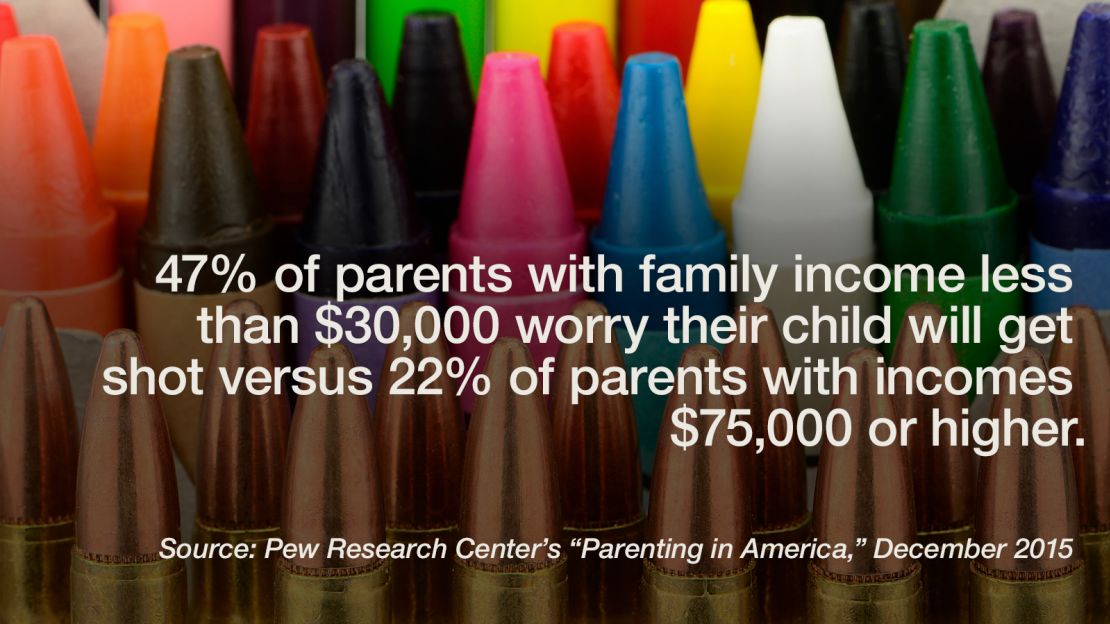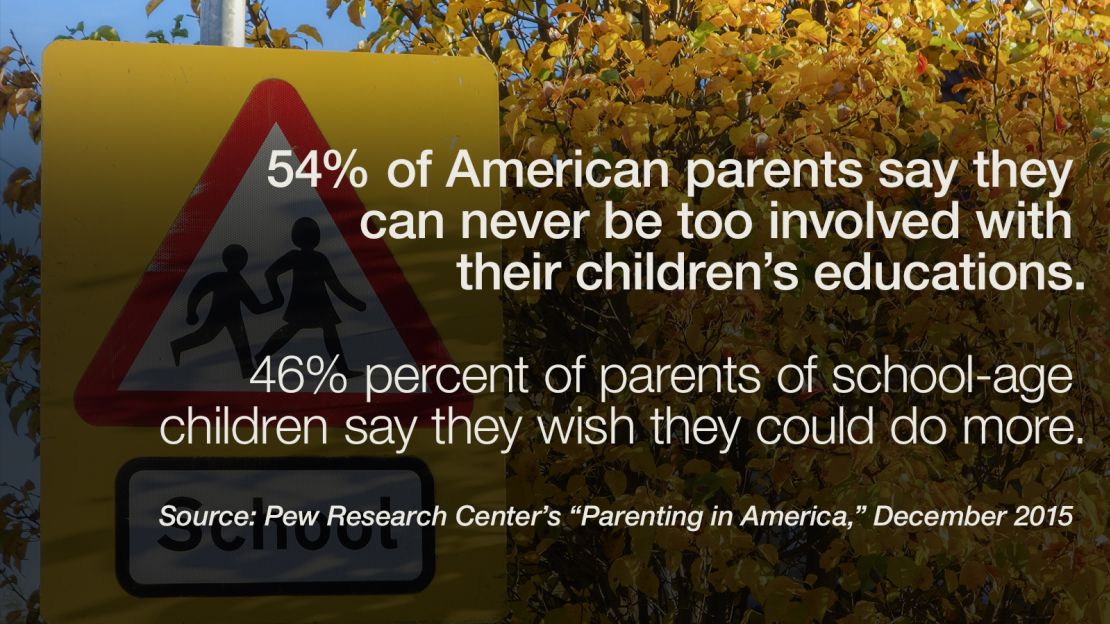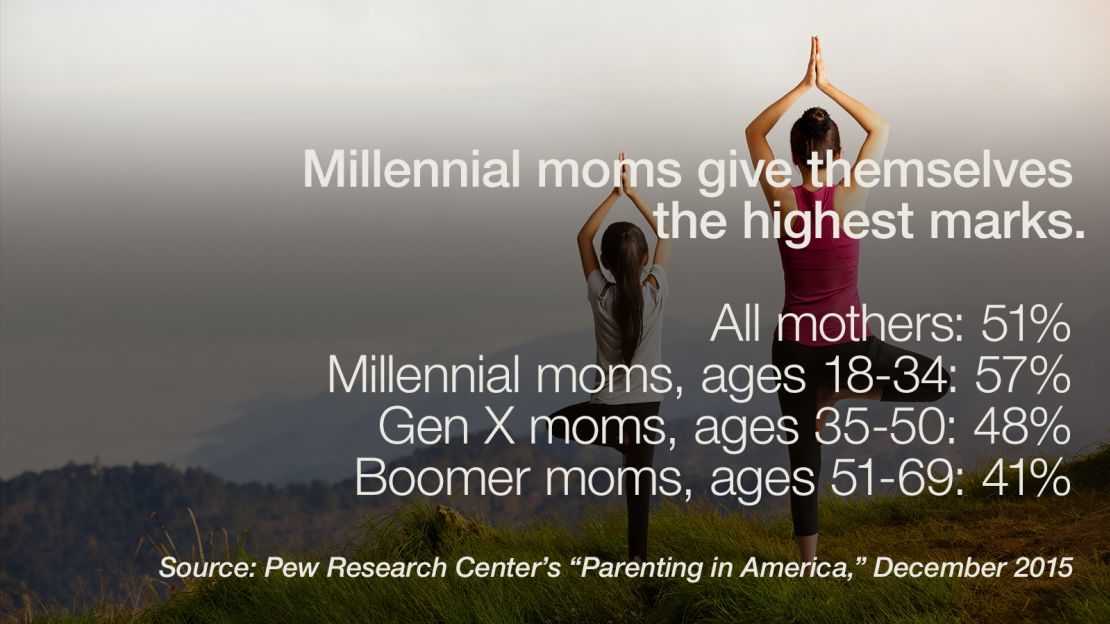Editor’s Note: Kelly Wallace is CNN’s digital correspondent and editor-at-large covering family, career and life. Read her other columns, and follow her reports at CNN Parents and on Twitter.
Story highlights
Worries for parents with incomes less than $30,000 include children being victims of violence, per report
Report found bullying is parents' top concern across income, racial and ethnic groups
When you reflect on the challenges of parenting in 2015, it’s easy to think about issues such as the impact of helicopter parenting, overscheduled children and teen media use, and whether the “everyone-gets-a-trophy” idea is making our kids too soft.
Those parenting philosophy debates often dominated much of our online conversations this year, and yet, they tend to overlook something very striking: that many parents, especially in lower income households, struggle with much more basic challenges every day, such as whether their kids will be safe from violence.
A new report by Pew Research Center, which is based on a survey of more than 1,800 parents in the U.S. with children under 18, reveals “stark parenting divides” between lower and upper income families.
Just consider the dramatically different responses from parents when they were asked about concerns they might have for their children. Fifty-nine percent of parents in households with an income lower than $30,000 worried their child would be kidnapped versus 44% for parents with incomes $75,000 or more, and 47% of lower income parents feared their child would get shot compared to 22% of upper income parents.

“We went into it wondering where the fault lines were in American parenting. Is it really about philosophies or values or is there something else going on?” said Kim Parker, director of social trends research for the Pew Research Center. “What we ended up finding was that really the major fault lines in parenting today tend to have less to do with those philosophical differences and maybe more to do with socioeconomic gaps, which are really sort of shaping and defining experience for a lot of parents and children.”
For many parents who are economically struggling, their worries include their immediate neighborhood and the lack of access to after-school activities that many families in higher income households might take for granted. Thirty-three percent of parents with incomes lower than $30,000 rated their neighborhood as fair or poor versus 7% for higher income parents. Eighty-four percent of upper income parents said their children played sports and athletic activities, compared to 59% of parents with incomes under $30,000.
“Whether it be sports or music lessons or art classes or ballet or organizations like the Scouts, lower income kids are doing those things but … it seemed from our survey findings that their access is probably more limited because those things take up valuable resources that might need to go towards rent or other more essential things,” said Parker.
Another difference based on income stems from whether parents think too much parental involvement in a child’s education can actually be a negative. While 54% of American parents say they can never be too involved in a child’s education and 46% of parents of school-age children wish they could do more, there are significant differences when it comes to whether there are diminishing returns to all that parental involvement.

Fifty-nine percent of parents with family incomes of $75,000 or higher said too much parental involvement in education can be a bad thing versus just 23% of parents with incomes under $30,000 who feel that way.
It’s hard to know the “why” behind this finding, said Parker, who added that it could be connected to the different school environments for children of lower and upper income households. If you are worried about your child’s school and the neighborhood around it, it stands to reason you might think you can never be too involved in their education, whereas upper income and highly educated families may have less concerns about the safety of their children’s school and may be more influenced by research, which encourages parents to let their children fail in order to build the resilience for success.
Related: Work-life balance: Gender divide at home still exists
When it comes to discipline, spanking is the least commonly used method, with just 4% of parents saying they do it often, and 53% saying they never spank. However, the use of spanking varies across racial groups. Thirty-two percent of black parents say they often or sometimes use spanking to discipline kids, versus 19% of Hispanic and 14% of white parents who say they often or sometimes spank their kids.

But, despite some dramatic differences, there are many issues that unite parents, no matter our incomes, education, race or ethnic backgrounds. For instance, bullying is the top concern for parents, across income and racial and ethnic groups – higher than concerns a child might be kidnapped, shot or attacked, suffering from anxiety or depression or doing drugs.

And when it comes to how they feel about their performance as parents, most feel they are doing a good job. Forty-six percent of parents with incomes less than $30,000 and the same number of parents with incomes $75,000 or higher say they are doing a very good job as parents.
But the group that thinks they are doing the best job? Millennial moms, who are 18 to 34, give themselves the highest marks, higher than Gen X moms and dads (ages 35 to 50) and boomer moms and dads (ages 51 to 69).

This comes after a report last year found that millennial moms were happier than other moms of other generations and more satisfied with their jobs, their family finances and their partners.
“What’s their secret?” asks this reporter, who happens to be a Gen X mom. Sounds like a future story!
What do you think are the top concerns of parents today? Share your thoughts with Kelly Wallace on Twitter @kellywallacetv or CNN Parents on Facebook.

























